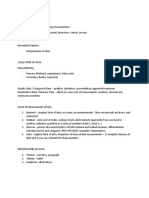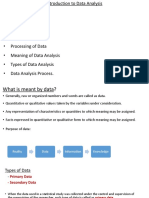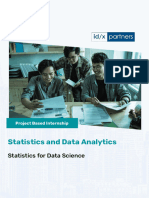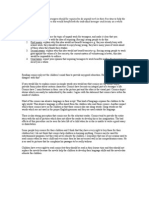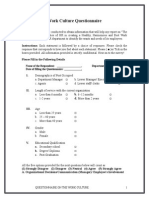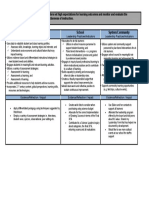0% found this document useful (0 votes)
14 views32 pagesTypes and Levels of Data Explained
This document outlines key concepts in data analytics, including terminologies, types of data, and levels of measurement. It explains structured, unstructured, and semi-structured data, as well as qualitative and quantitative data, and their respective subgroups. Additionally, it covers statistical parameters such as mean, variance, and standard deviation, emphasizing the importance of normal distribution in statistics.
Uploaded by
ngocchauct2004Copyright
© © All Rights Reserved
We take content rights seriously. If you suspect this is your content, claim it here.
Available Formats
Download as PDF, TXT or read online on Scribd
0% found this document useful (0 votes)
14 views32 pagesTypes and Levels of Data Explained
This document outlines key concepts in data analytics, including terminologies, types of data, and levels of measurement. It explains structured, unstructured, and semi-structured data, as well as qualitative and quantitative data, and their respective subgroups. Additionally, it covers statistical parameters such as mean, variance, and standard deviation, emphasizing the importance of normal distribution in statistics.
Uploaded by
ngocchauct2004Copyright
© © All Rights Reserved
We take content rights seriously. If you suspect this is your content, claim it here.
Available Formats
Download as PDF, TXT or read online on Scribd
/ 32


